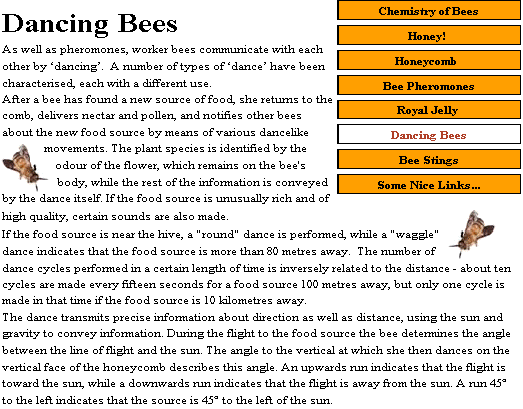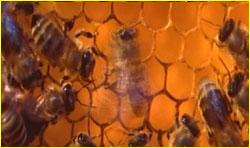
Because the position of the sun changes during the day, the dance angle must also change; and this actually occurs. If the sun is concealed behind clouds or terrain, the bee analyses the pattern of polarised light from the sky. If only a small opening of sky is visible, it reveals to the bee's eye a typical pattern that travels along with the sun. A particular intensity of polarised light is generated toward the earth's surface from every point in the sky, and so the sun's position is determined by the bee's sensitivity to polarisation differences.

Bees will watch only one waggle dance, and will only watch for a brief period before leaving the hive. This means that the bee will not necessarily know exactly how rich the source is, and so does not automatically go for the richest sources, which would mean that the colony would not be maximising its use of available resources.
Honeybees perform two other types of dance. The "shake" dance is performed when nectar sources are so rich that more foragers are needed. A worker arriving back from a foraging run will shake her abdomen back and forth before a non-foraging worker for one to two seconds before moving onto more non-foragers at the rate of between one and 20 bees per minute. The shake dance encourages these non-foragers to make their way to the waggle dance floor.
Finally, the "tremble" dance, which may last for over an hour, is performed when foragers have collected a large amount of nectar, and stimulates additional bees to begin processing this nectar into honey. Walking slowly around the nest, the dancer quivers her legs, causing her body to tremble forward and backward and from side to side.
The waggle dance is also performed when a swarm is searching for a new dwelling. When a swarm accompanies its queen from the hive, it gathers first in the immediate neighbourhood of the old hive. Scouts fly out in all directions looking for a suitable nesting place. When a suitable site is found, the scouts return to the cluster and announce the site by means of the dance. The swarm then moves en masse.

The ‘Waggle Dance’